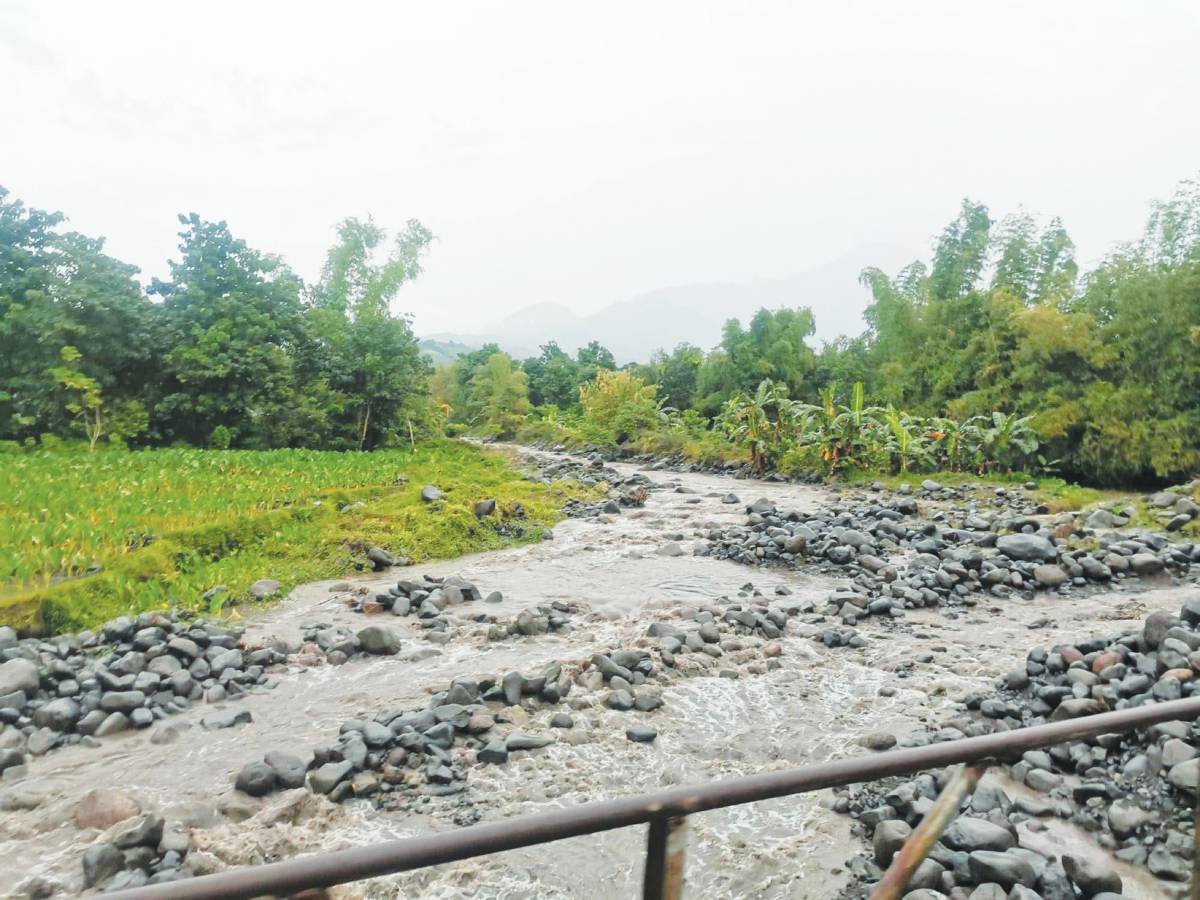
By JEN BAYLON
A minor explosive eruption at Kanlaon Volcano on Thursday, February 6, prompted concerns over potential lahar flows due to rainy conditions.
Mari-Andylene Quintia, resident volcanologist of the Philippine Institute of Volcanology and Seismology’s (Phivolcs) Kanlaon Volcano Observatory, confirmed that muddy stream flows from the volcano were recorded in two rivers following the minor eruption.
Quintia said a muddy stream flow was observed in the Buhangin River in Barangays Sag-ang, Robles and Lalagsan in Negros Occidental’s La Castellana town, heading towards Moises Padilla town.
She said the flow was less dense than typical lahar flows due to higher water content.
Videos on social media also highlighted muddy stream flows along the Binalbagan River, underscoring the widespread impact of recent volcanic activity on local waterways.
Phivolcs added that “syneruption lahars were immediately generated” as the eruption occurred during rainy weather.
Quintia emphasized that, while these flows are less severe than lahars, they still pose risks during rainy weather conditions.
Phivolcs noted that further eruptions are possible if abrupt activities are detected at the volcano.
Quintia explained that any abrupt changes — such as significant ground deformation or increased seismicity — could trigger an increase in alert levels and potentially lead to more explosive eruptions.
Such changes are closely monitored by Phivolcs as part of their ongoing surveillance efforts.
The resident volcanologist said the minor eruption on Thursday was attributed to a system clog causing gas pressure buildup at Kanlaon.
This pressure led to the release of gases and resulted in the minor explosion, Quintia added.
On Thursday, a two-minute minor explosive eruption occurred in the crater, based on seismic and infrasound records from the Kanlaon Volcano Network.
The eruption generated a poorly visible plume reaching 600 meters above the vent, drifting southwest, scattering thin ashfall over Barangay Sag-ang in La Castellana.
The explosion also generated a booming sound in La Carlota City’s Barangays Yubo and Sag-ang.
Sulfurous fumes were also reported in several barangays of La Castellana.
“Prior to the event, sulfur dioxide flux was measured at an average of 2,249 tons per day, a significant drop from the medium-term average of 4,484 tons per day since June 3, 2024, while degassing from the summit crater has been weak since the previous evening,” Phivolcs said in a report.
“The upper to middle slopes of the edifice have been undergoing inflation or swelling since January 10, 2025, and when occasional plugging of the volcanic conduit occurs and sulfur dioxide emission and degassing weaken, the resulting pressure build-up within the conduit could trigger explosions,” Phivolcs further said.
Alert Level 3 or magmatic unrest prevails over Kanlaon.
“This means that the magmatic eruption that occurred may be followed by similar short-lived explosive eruptions in the short term, which may generate pyroclastic density currents [PDC] within the six-kilometer radius area on the summit,” Phivolcs also said.
It has been recommended that communities within a six-kilometer radius of the summit crater be evacuated due to the danger of lava flows, rockfalls, PDCs, and other related hazards.
Local government units must also prepare their communities within the PDC hazard zone for subsequent evacuation in case unrest further escalates and a hazardous worst-case explosive eruption becomes imminent./JB, WDJ

